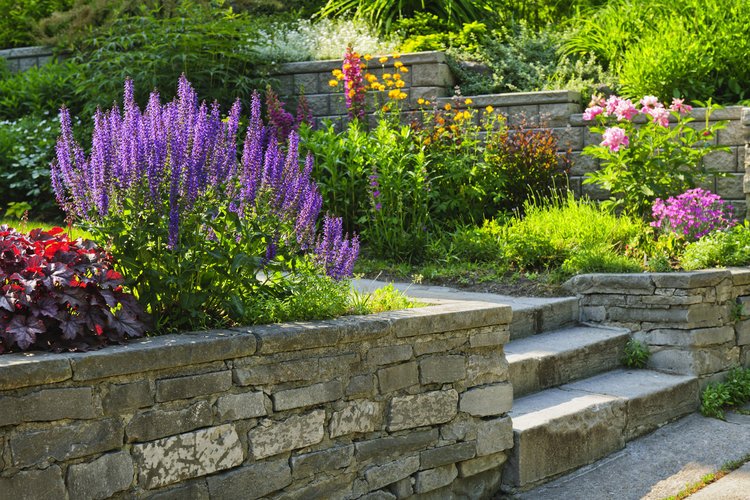5 Design Styles for your Retaining Walls
Whether you’re looking for a design style for your retaining walls or looking for ways to match them to an existing style, here are some ideas to help you get the look you want for your Hopewell Junction, NY landscape.
Modern
Retaining walls matching a modern landscape design are frequently characterized by neat geometry with an emphasis on clean horizontal lines, both in the layout of the wall and the size and shape of the wall veneer. Occasionally sweeping, stylized curves are incorporated into the layout of the walls to soften the hard geometry of other features. Granite, both polished and rough hewn is a favorite material in modern design, with the surfaces of structures often exhibiting rich natural detail in order to compensate for the intentional lack of other decorative features. The retaining walls of a modern landscape design serve both a functional and decorative purpose.
Rustic
With an emphasis on rich, warm and natural coloring, shapes and texture, rustic retaining walls are irregular and rugged. Uncut flagstone is often featured, as are boulder walls, constructed from large, unprocessed, sometimes rounded chunks of rock. Wood is another material often associated with a rustic theme. Lumber or even raw and minimally treated logs can be incorporated into a rustic retaining wall design. Retaining walls contributing to a rustic design theme often follow a meandering path along natural contours of the landscape, with an emphasis on organic shapes and lines.
Mediterranean
A Mediterranean design theme reflects the paradisaical Mediterranean climate in both plantings and construction materials. Retaining walls in this theme often feature stone that reflects a sunny character such as limestone or sandstone, whether these are used as vertical veneer or capstone. Marble may also be used for a luxurious touch. Whites, light browns and gold are the colors to emphasize to capture a Mediterranean feel. Although there is no strict convention when it comes to shape or form of layout, Mediterranean retaining walls often reflect gentle curves and soft, organic shapes.
Cottage
Similar to a rustic theme with emphasis on natural lines, shapes and materials, the cottage style reflects finer textures in its landscape. Rather than large unprocessed rocks used in boulder walls, a retaining wall in the cottage style might consist of smaller boulders, cobbles and brick. Small square natural stone veneer tiles also work well with a cottage style. The overall effect is slightly more elegant and controlled than a rustic theme. This is reflected even in the layout of the retaining walls that have the tendency to have more clearly defined curves.
Formal
Formal retaining walls tend to form strict geometric lines in their layout. Straight lines and square angles are a common feature. Retaining walls in a formal style make use of a wide range of materials from flagstone to granite, with bluestone featuring frequently. What is more easily definable in the formal style is the architectural shape of the wall, this consisting of prominent capstones and visually assertive end pillars.

